
10 Mar Online Focus Groups and Dial Testing – In the #Corona #Virus Era
You can rest easy: Dial test groups can be effectively executed online, to keep your data flowing.
Dial testing is a key part of Engagious’ research approach. And right now many people are asking “Can we do qual research online?” Yes. We are in the midst of #coronavirus and yet we all still have research to execute and clients who need insights ASAP. Online research options are your friend. And we’ve got you covered.
Specific questions? Get in touch and we’ll talk it through: hi@engagious.com
Our Dialsmith group has been in the dial testing game for a long time. As the developer of the Perception Analyzer dial testing tools and services for focus groups and surveys, we support global clients with in-person and online research every day.
Specific questions? Get in touch and we’ll talk it through: hi@engagious.com
So, without further ado, you might be wondering…
What is Dial Testing?
Here’s the deal; if you’re trying to find out what people are really thinking, memory stinks. Asking someone what they thought, or how they felt, about something is bound to give you all kinds of less-than-reliable results. We’ve studied this and with the help of industry and academic experts have tons of resources for you.
So, how can dial testing help? Dial testing is how you overcome the negative impact of flawed memory and recall bias by capturing what people think in-the-moment. This is done two ways; with hand-held dials in focus groups and with an on-screen slider in surveys.
As participants watch your content (online or in person), such as ads, TV shows, presentations, etc., they use in-person dials or an online slider to give continuous, second-by-second feedback. This gives you real-time, gut reactions that you can then use to probe deeper and refine your content.
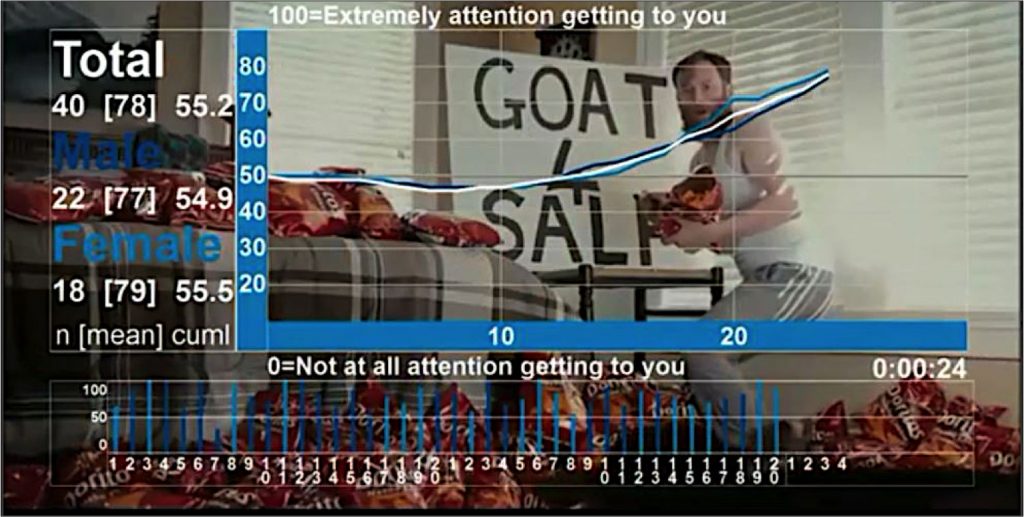
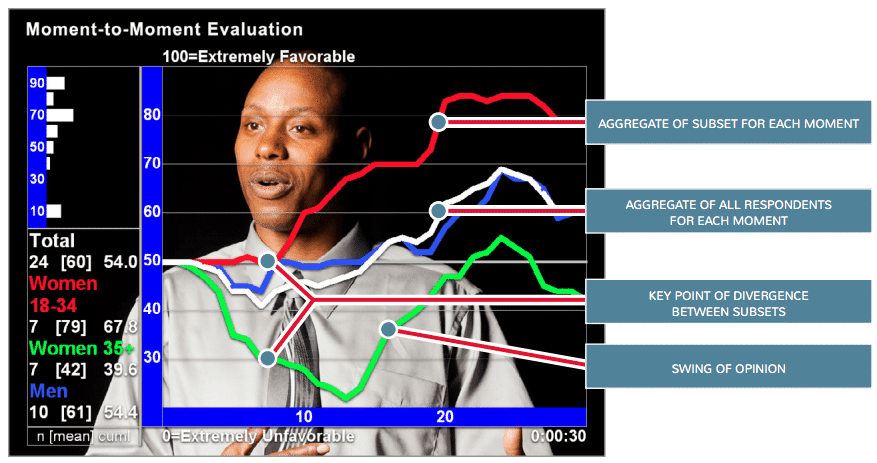
The second-by-second results are overlaid on top of the content being tested. Colored lines represent different audience segments.
So, Dial Testing is Just for Media Testing, Right?
Oh, contraire, my friend. Dial testing is used for a heck of a lot more than that! Yes, what makes dial testing most unique is its ability to to capture moment-to-moment reactions through a dial or slider. But, those same devices can be used to ask all kinds of other questions.
For example, in a focus group, participants can use their dials to answer closed-ended questions. Some may be as simple as a gender question to help segment the moment-to-moment ratings, while others may be Likert scale or attitudinal scale questions to gauge feelings and opinions. Most any closed-ended question can be asked with the dials in a focus group.
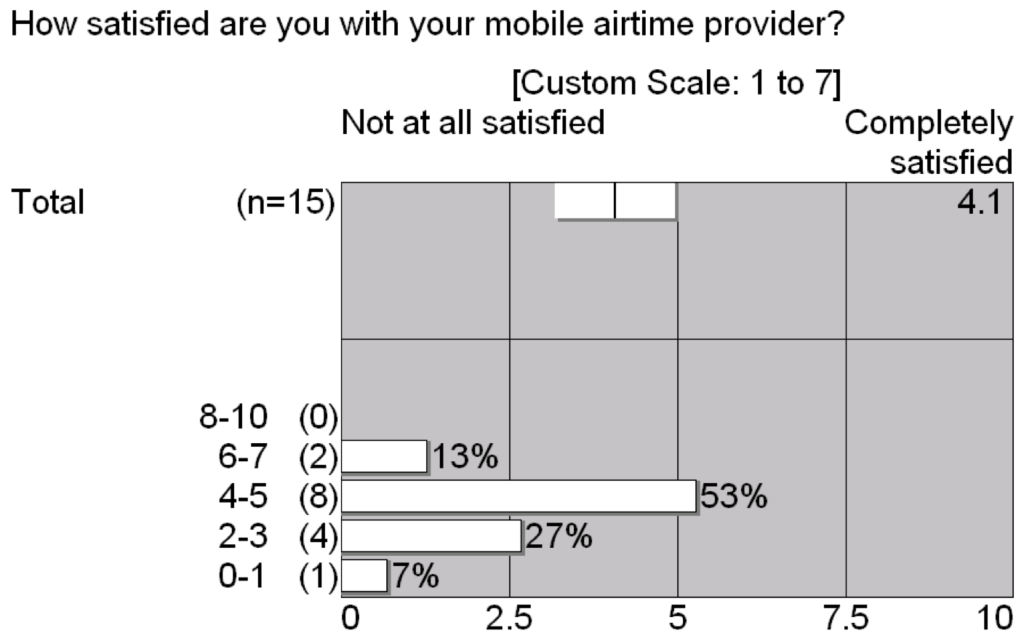
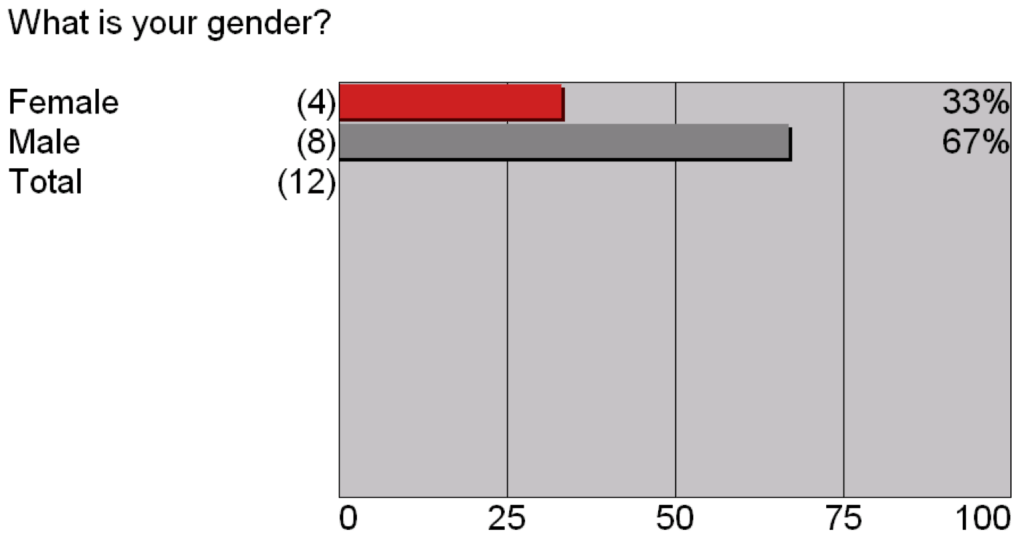 Dial testing results for Attitudinal Scale and Discrete Choice questions
Dial testing results for Attitudinal Scale and Discrete Choice questions
This has the added bonus of eliminating groupthink by allowing each participant to answer privately and individually before opening things up to group discussion. You’re paying every respondent, so why not hear from each of them for every question?
How Do Respondents Answer Questions with the Dials?
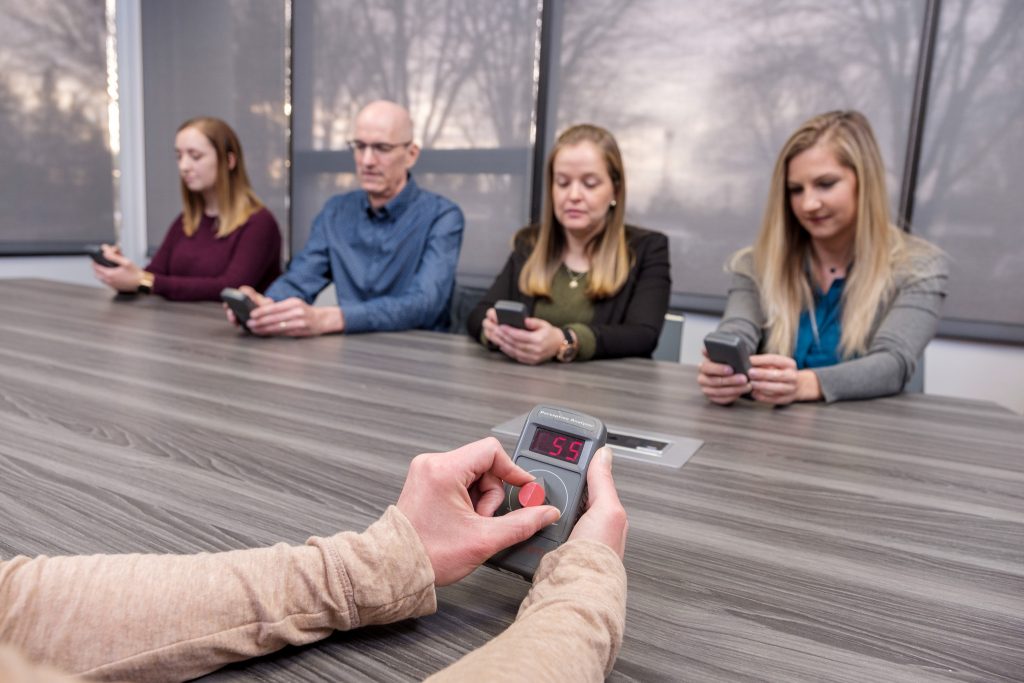 Good question! The dials use a 0 – 100 numeric range, but can also use any range in-between. So, for instance, for a gender question, respondents would dial 1 for Female and 2 for Male. For a 5-point Likert scale, respondents would dial between 1-5 for the range of Strongly Disagree-Strongly Agree. For a 5-, or 7-, or 10-point attitudinal scale, respondents would dial to the appropriate number based on the scale labels.
Good question! The dials use a 0 – 100 numeric range, but can also use any range in-between. So, for instance, for a gender question, respondents would dial 1 for Female and 2 for Male. For a 5-point Likert scale, respondents would dial between 1-5 for the range of Strongly Disagree-Strongly Agree. For a 5-, or 7-, or 10-point attitudinal scale, respondents would dial to the appropriate number based on the scale labels.
For every question, the moderator, as well as colleagues and clients in the viewing room, can see the results charted in real-time to help drive group discussion. Any of those questions can also be used to segment the results of moment-to-moment ratings so you can see how different subgroups reacted to the content.
How Does Dial Testing Work Online?
Online dial testing is very similar to in-person dial testing except respondents use an on-screen slider instead of an in-person Perception Analyzer dial. Video or audio content gets embedded into a survey and respondents adjust the slider continuously as they watch. There is also an optional hotkey that respondents can click to indicate they would take a particular action.
For example, during a TV show they may click a “tune-out” button if at some point during the show they would stop watching if they could. That moment is recorded and the respondent continues rating the show to the end.
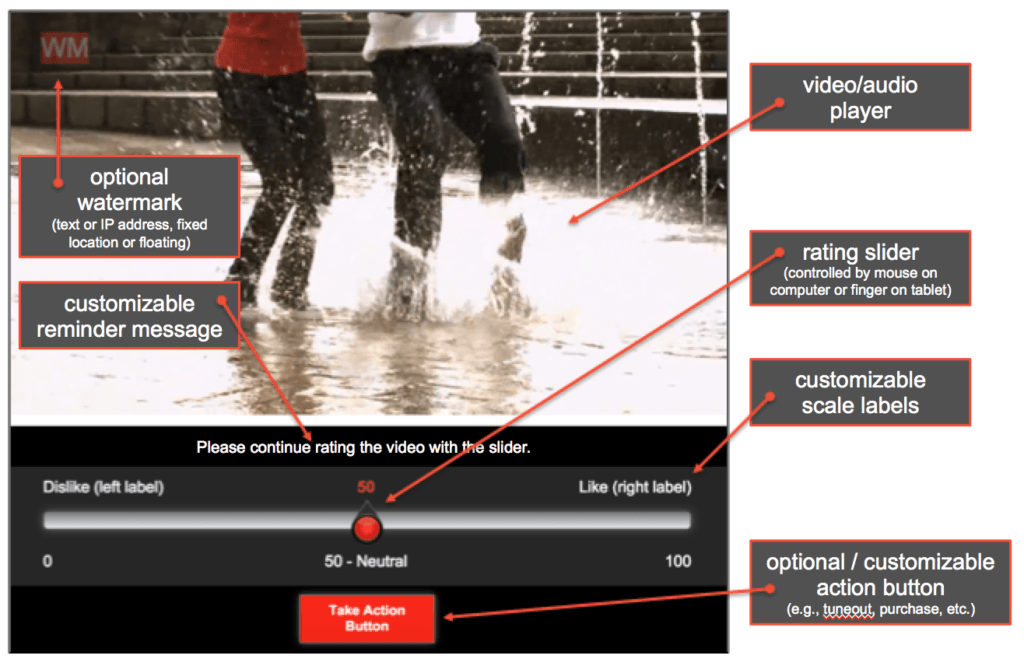
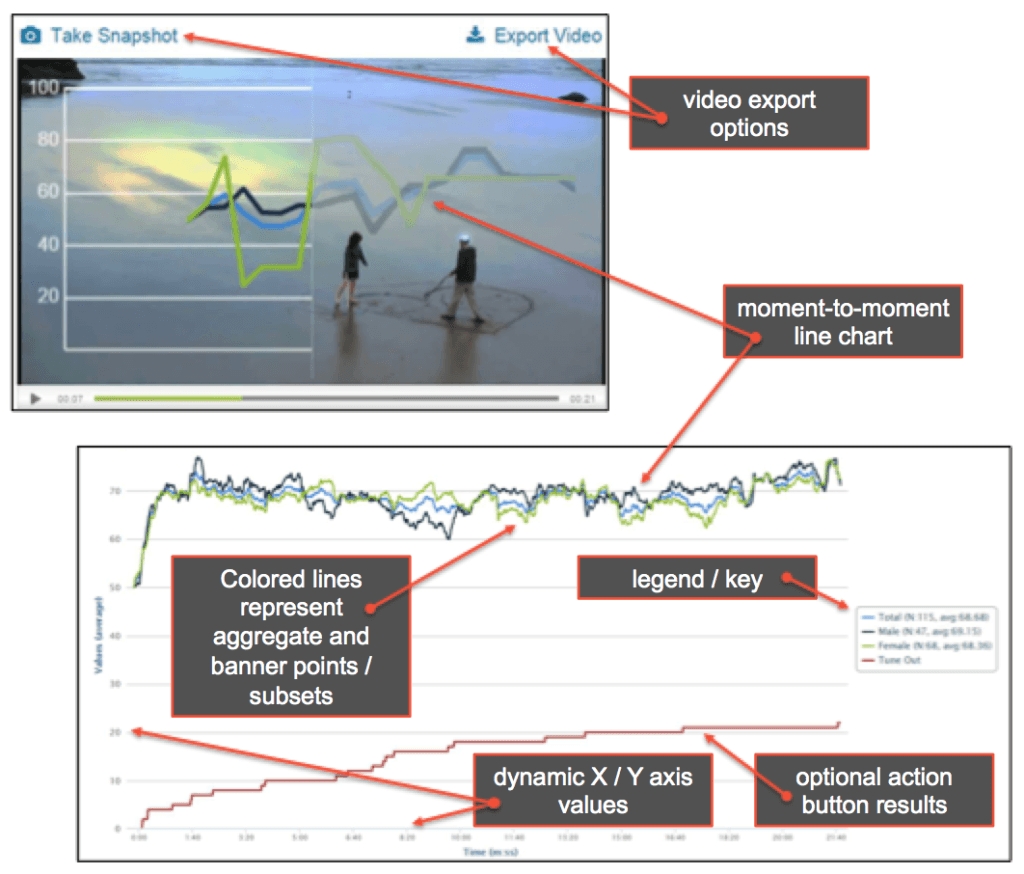
Overview of our online dial testing tools and moment-to-moment reporting.
Want to Learn More About Dial Testing?
Here’s a short video from our in-house Dialsmith group:
And here’s some additional recommended reading:
Dial Testing Group vs Focus Group: How Are They Different?
10 Ways Dial Testing Will Improve Your Research
Moment-to-Moment Research Playbook
Hope that helps. If you have follow-up questions or want to discuss how dial testing can help with your research, please feel free to hit us up.

Pingback:Engagious | Resilience in a pandemic
Posted at 16:24h, 23 April[…] In the meantime, Engagious is adapting: Qualitative research continues; focus groups can still happen, online. Dial tests, too. […]